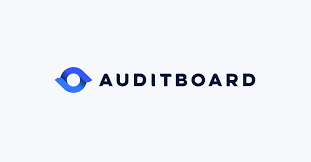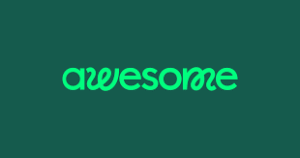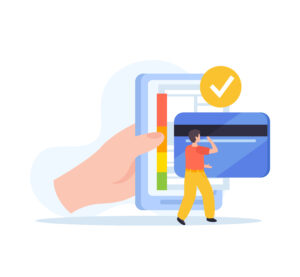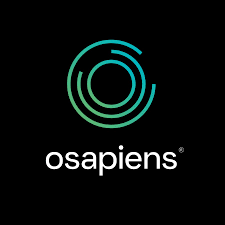AuditBoard: The All-in-One Risk and Compliance Platform

In an increasingly complex corporate landscape, AuditBoard has established itself as a leading cloud platform that unifies audit, risk, compliance, and ESG workflows. Founded in 2014 by Daniel Kim and Jay Lee, both former auditors, the company built a product aimed at replacing spreadsheets and disparate point tools with a single connected environment that centralizes controls, testing, evidence, and reporting. AuditBoard now serves thousands of enterprise customers and has become a default choice for many large audit and risk functions. Its platform is designed to provide both operational efficiency and strategic insight, allowing audit teams to spend less time on manual processes and more time on identifying key enterprise risks.
Driving Growth in a Complex Marketplace
AuditBoard’s ascent reflects both the increasing complexity of regulatory regimes and the corporate need to demonstrate governance at scale. The company crossed a major revenue milestone in the early 2020s, reporting more than $200 million in annual recurring revenue, and it continued to expand its footprint across large enterprises. In mid-2024, AuditBoard agreed to be acquired by private equity firm Hg in a transaction valued at more than $3 billion, a deal that underscored investor confidence in the platform’s role in modern governance.
Those developments came as demand for integrated GRC software surged, driven by tighter regulatory scrutiny, broader disclosure requirements, and the need for real-time risk visibility at the board level. Organizations facing a variety of regulatory mandates, including SOX compliance, GDPR, and ESG reporting, increasingly sought platforms that could consolidate risk, compliance, and audit data in a single interface, reducing redundancies and improving transparency.
Platform Capabilities and Key Modules
At its core, AuditBoard offers modular capabilities that work from a single data model. The audit management module brings planning, testing, issue tracking, and reporting into one lifecycle, while the risk module enables enterprise and operational risk maps that can be traced back to controls and audits. Compliance functions, including SOX testing and third-party oversight, are supported by automated evidence collection and workflow controls. The ESG module allows companies to track sustainability metrics and link them to existing control frameworks.
Customers cite time savings, fewer manual touchpoints, and faster close cycles as practical benefits of centralization. Many organizations report that consolidating disparate workflows into a single platform has improved internal collaboration, increased accountability, and allowed risk and audit teams to produce board-ready reports in less time than previously possible.
Client Vignette: From Spreadsheets to a Single Source of Truth
A large multinational industrial firm, anonymized at its request, illustrates AuditBoard’s impact. Before adopting the platform, the company’s internal audit team relied on spreadsheets, email chains, and fragmented point tools. Audit cycles were extended, evidence collection was manual, and reporting to the audit committee was labor intensive. After a phased rollout of AuditBoard, the team consolidated audit plans, automated evidence requests, and established a central control library.
The result was a measurable reduction in audit cycle time, fewer control redundancies, and board-ready reporting that required far less manual consolidation. The audit team reported increased confidence in their ability to manage complex compliance requirements, while executives gained visibility into enterprise-wide risk in near real time. The firm also noted that ESG initiatives, previously tracked in siloed spreadsheets, were now measurable and reportable using the platform.
The Business Model and Market Opportunity
AuditBoard operates on a subscription-based SaaS model, licensing modules to large enterprises and expanding through cross-sell and deeper functional penetration inside existing customers. The total addressable market is expanding as organizations confront cyber risk, supply chain exposure, and rising expectations for sustainability reporting. By positioning itself as a connected risk platform that serves audit, risk, and compliance teams in one environment, AuditBoard targets an opportunity that spans audit automation, enterprise risk management, and compliance reporting.
The company’s capital-efficient growth and customer retention have been key to scaling ARR and expanding margins. Analysts estimate that the enterprise GRC market will continue to grow at a robust rate, driven by digital transformation, increased regulatory scrutiny, and the need for more agile and integrated audit and risk functions.
Competitive Positioning and Differentiation
AuditBoard’s product differentiation rests on practitioner-led design, an integrated data core, and a user experience tuned to audit workflows. The founders’ audit backgrounds informed early decisions to map controls to risks and to make evidence collection a first-class feature. That orientation helped AuditBoard win business at finance and compliance-heavy enterprises where audit teams needed both rigour and automation.
The platform’s move into AI-enabled capabilities, such as intelligent testing and automated evidence requests, is designed to shift teams from administering compliance to identifying risk strategically. Customers report that the AI features streamline repetitive tasks, allowing teams to focus on high-impact risk insights. These capabilities, combined with strong customer support, have contributed to high retention and positive adoption metrics.
Original Investors and Funding History
AuditBoard raised early seed capital from Mucker Capital and Wavemaker Partners and completed a $40 million Series B led by Battery Ventures in 2018. These early investors provided both capital and domain introductions that helped the company scale product and sales functions. The combination of founder experience, early startup guidance, and later institutional backing helped set the stage for AuditBoard’s large enterprise adoption. This early support allowed AuditBoard to develop enterprise-grade features, hire experienced product and sales teams, and compete effectively in a growing GRC software market.
Challenges and Considerations Ahead
Despite momentum, AuditBoard faces several challenges common to high-growth SaaS companies. International expansion demands product localization for different regulatory environments, and staying ahead of rapidly evolving compliance and ESG standards requires continuous product innovation. Additionally, competition from specialist audit software and larger enterprise GRC suites is intensifying. AuditBoard must continue to scale while maintaining product differentiation and integration to preserve its core value proposition.
Executives also acknowledge that as AI and automation become standard expectations, the company will need to continuously enhance its platform without compromising usability. Maintaining simplicity in a complex, feature-rich product remains a critical challenge.
Looking Ahead: Scaling for the Future
With strategic backing and an entrenched customer base, AuditBoard’s roadmap focuses on deeper adoption inside existing accounts, expansion into adjacent functional areas such as IT risk and third-party risk, and international market entry. The company’s investment in automation and analytics aims to convert operational data into strategic insight, allowing audit and compliance teams to deliver predictive risk signals to executives and boards.
If AuditBoard sustains product discipline while growing scale, it is well-positioned to shape how large organizations manage connected risk going forward. Customers consistently cite improved executive decision-making, faster audit cycles, and enhanced visibility into enterprise risk as tangible outcomes of platform adoption.





